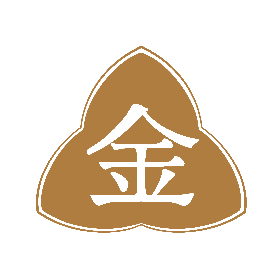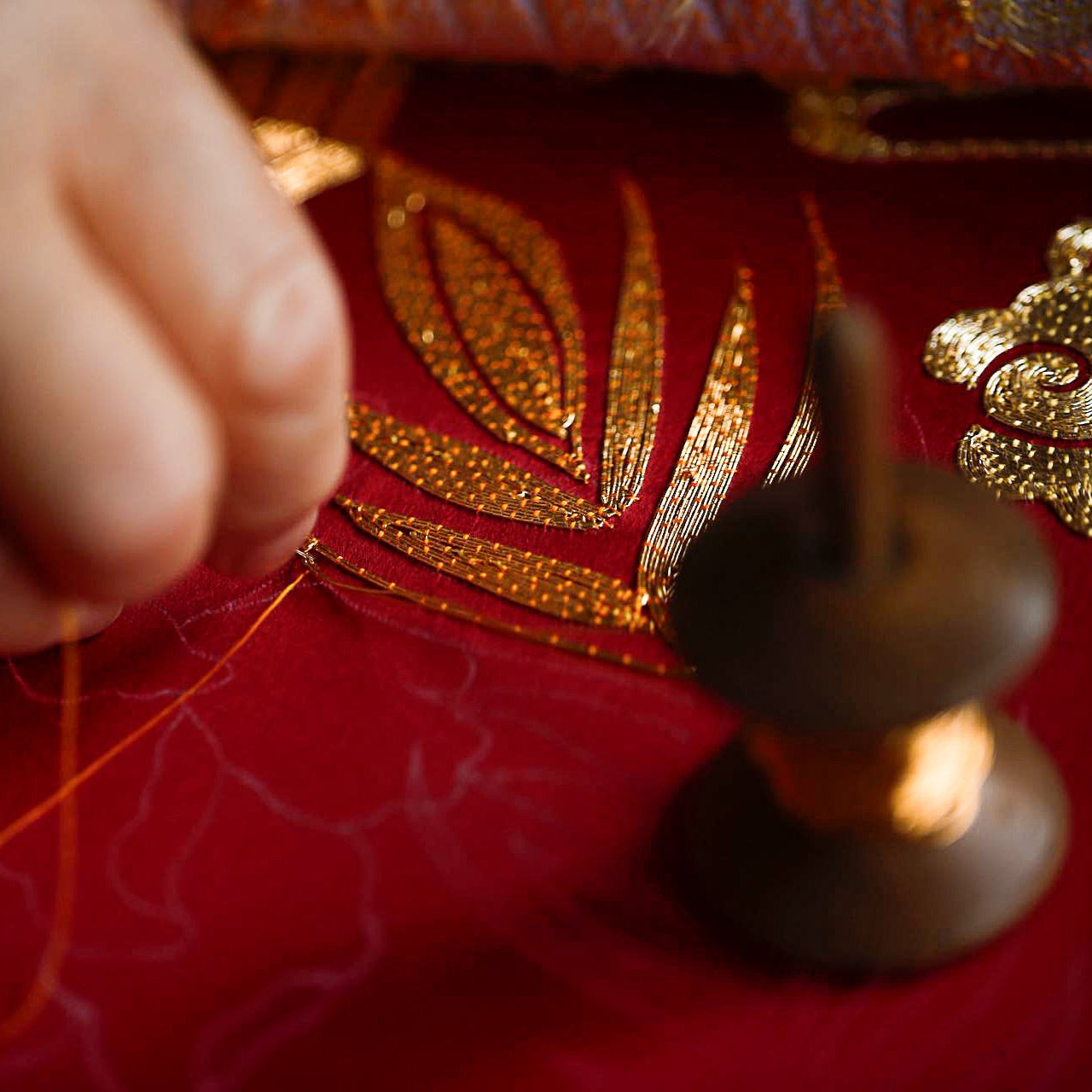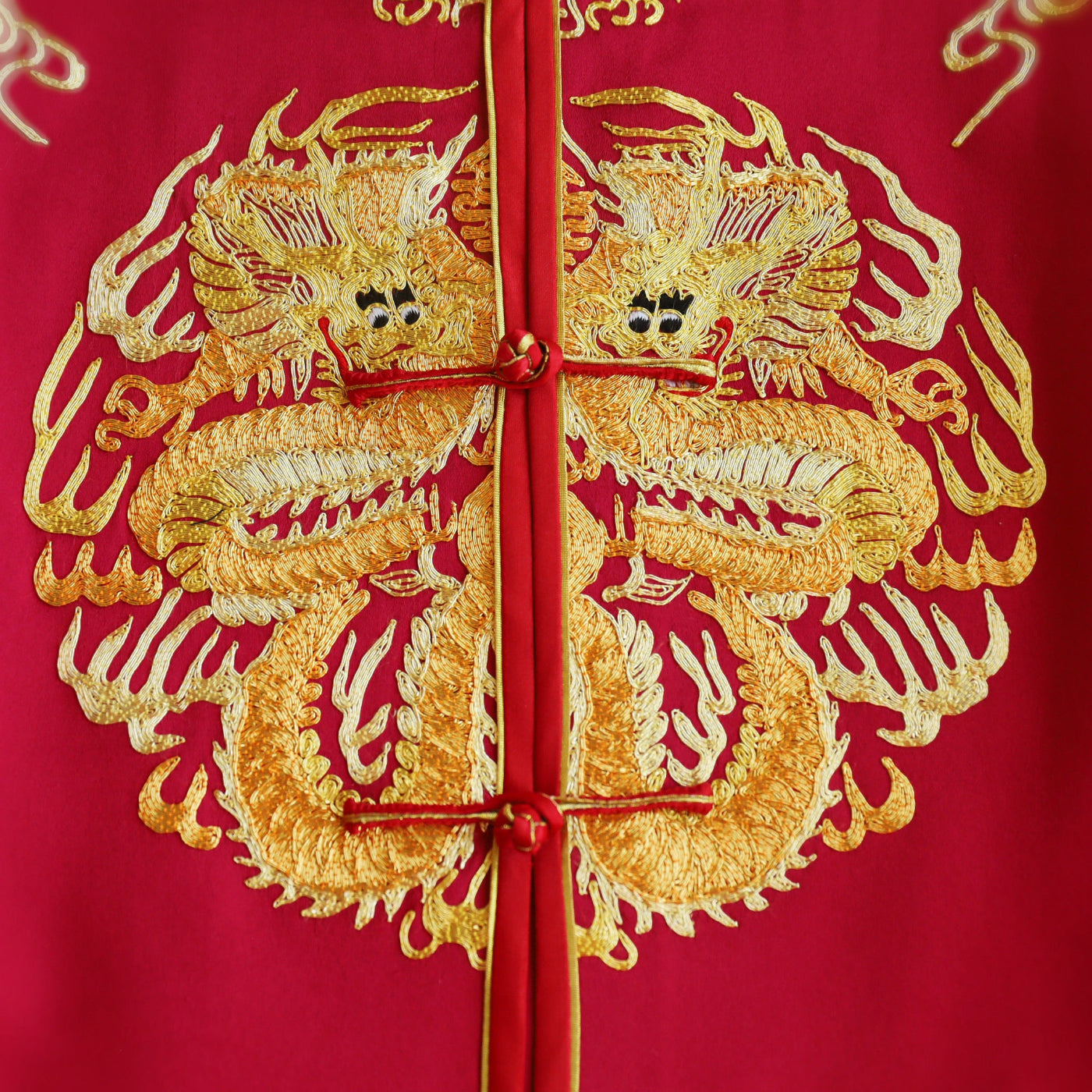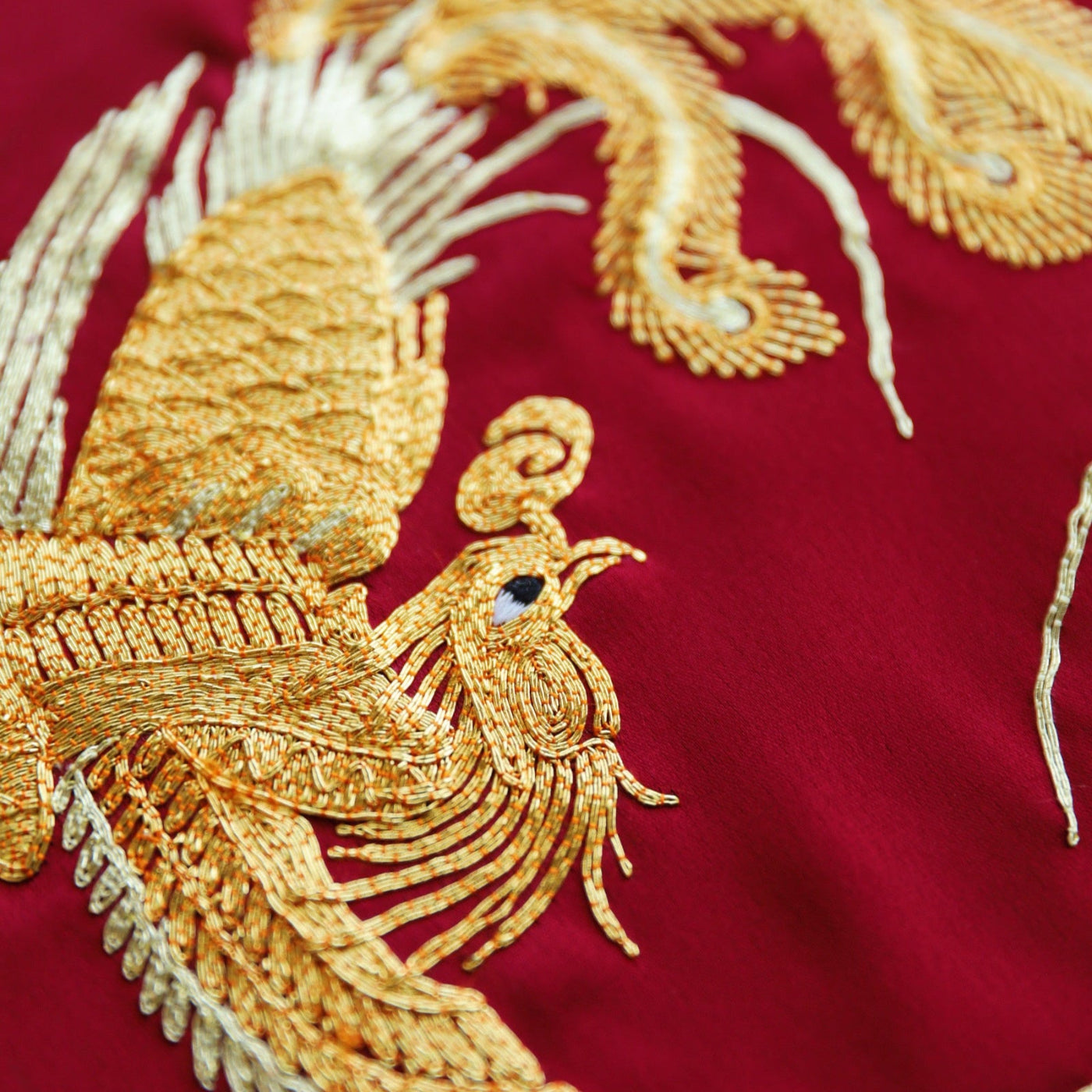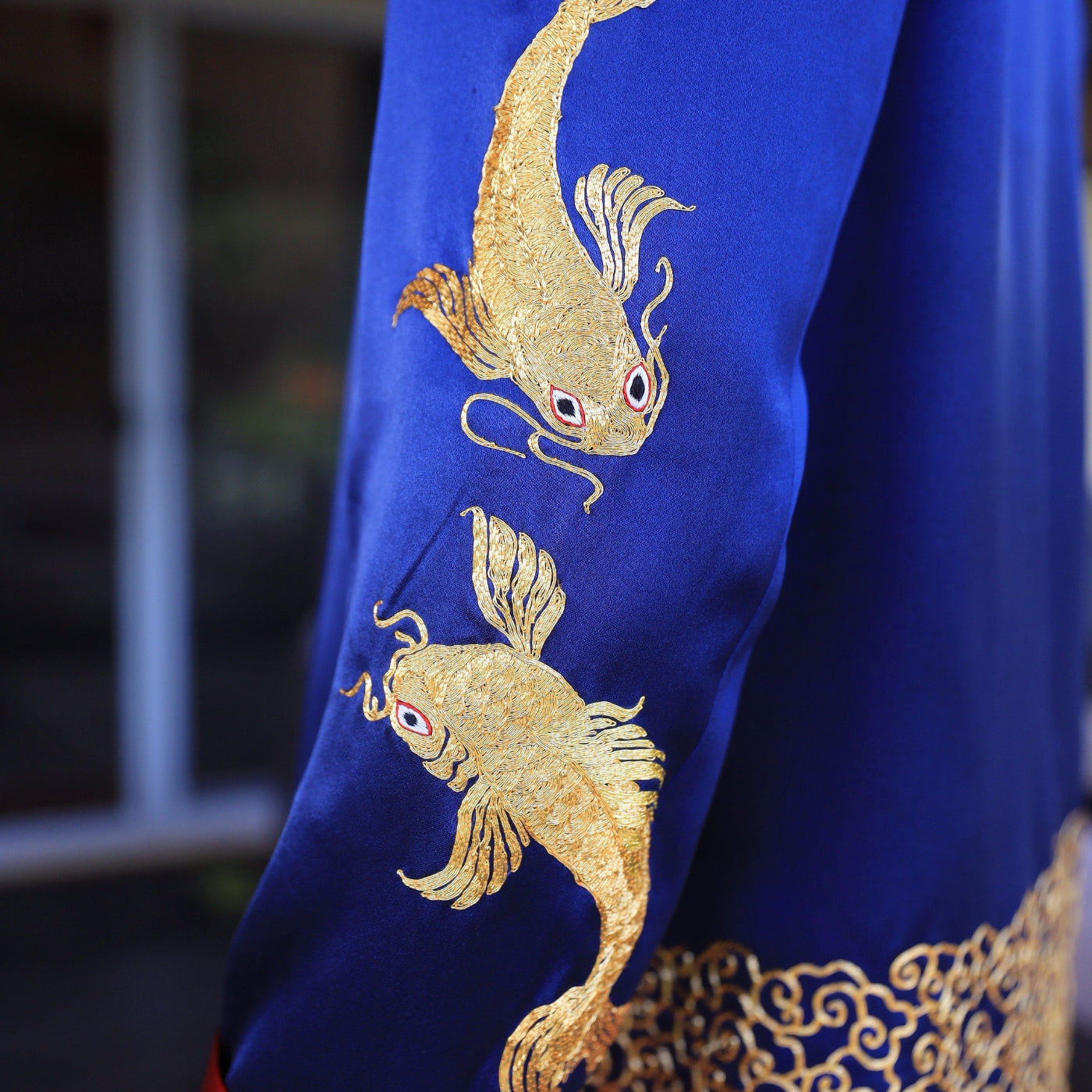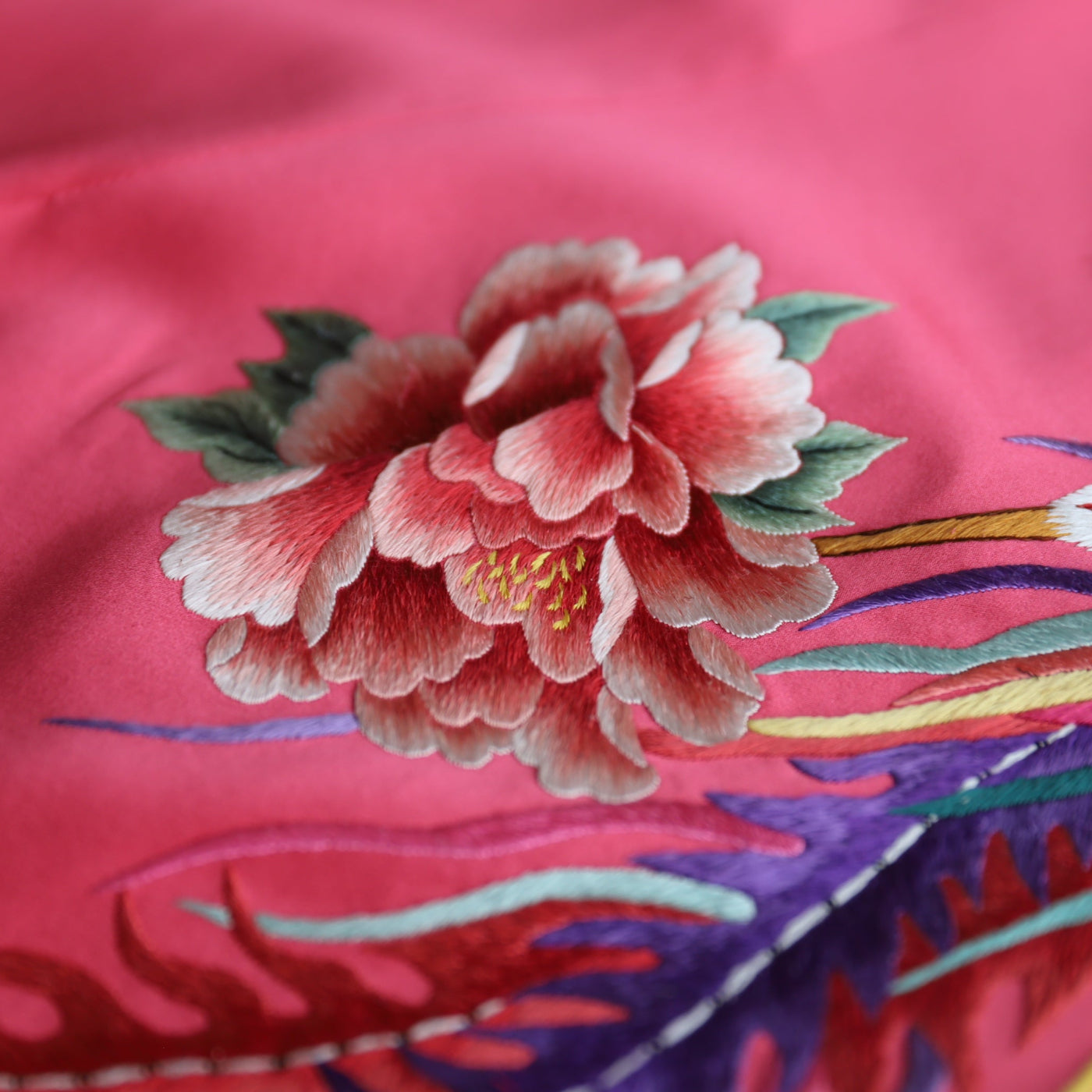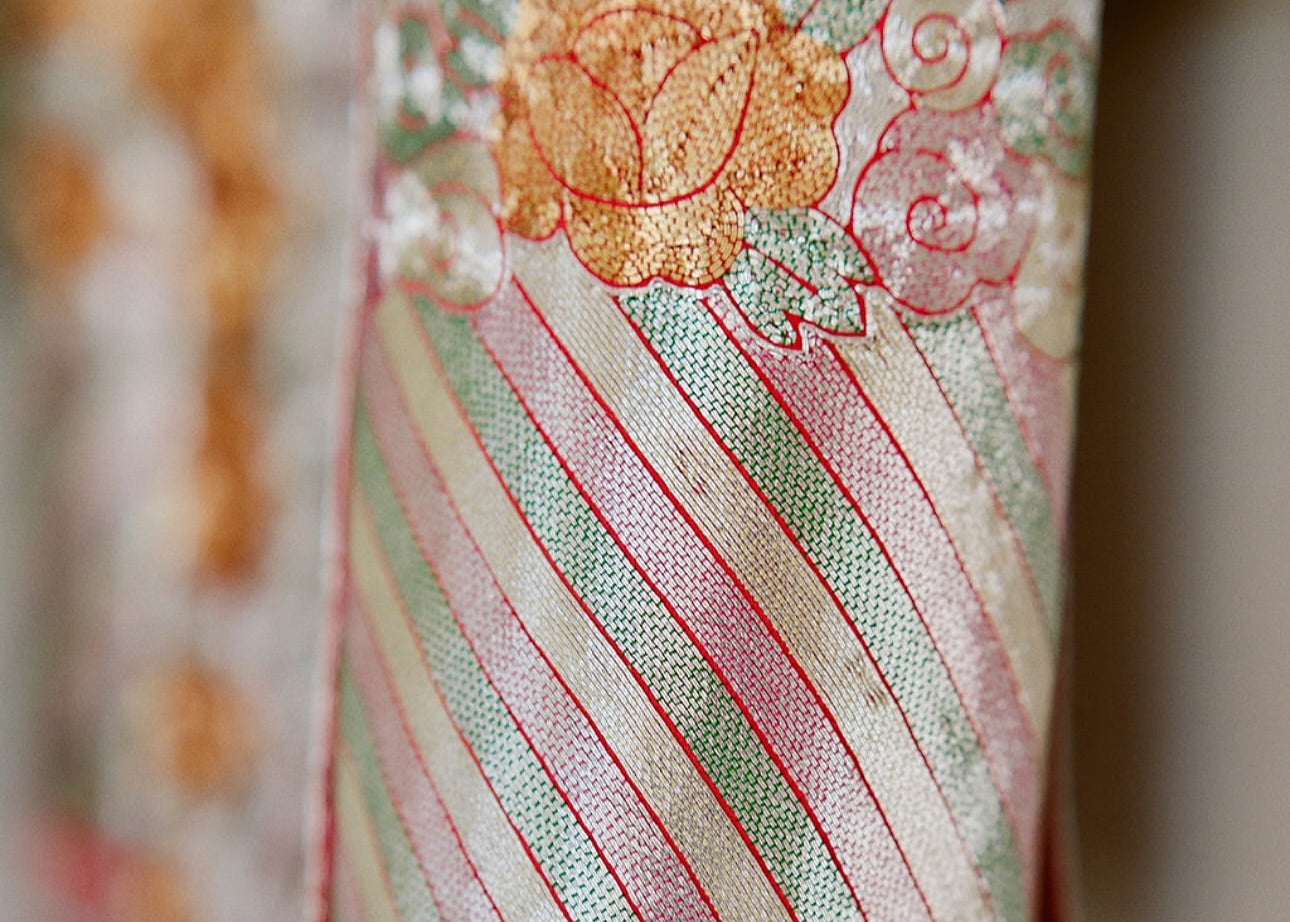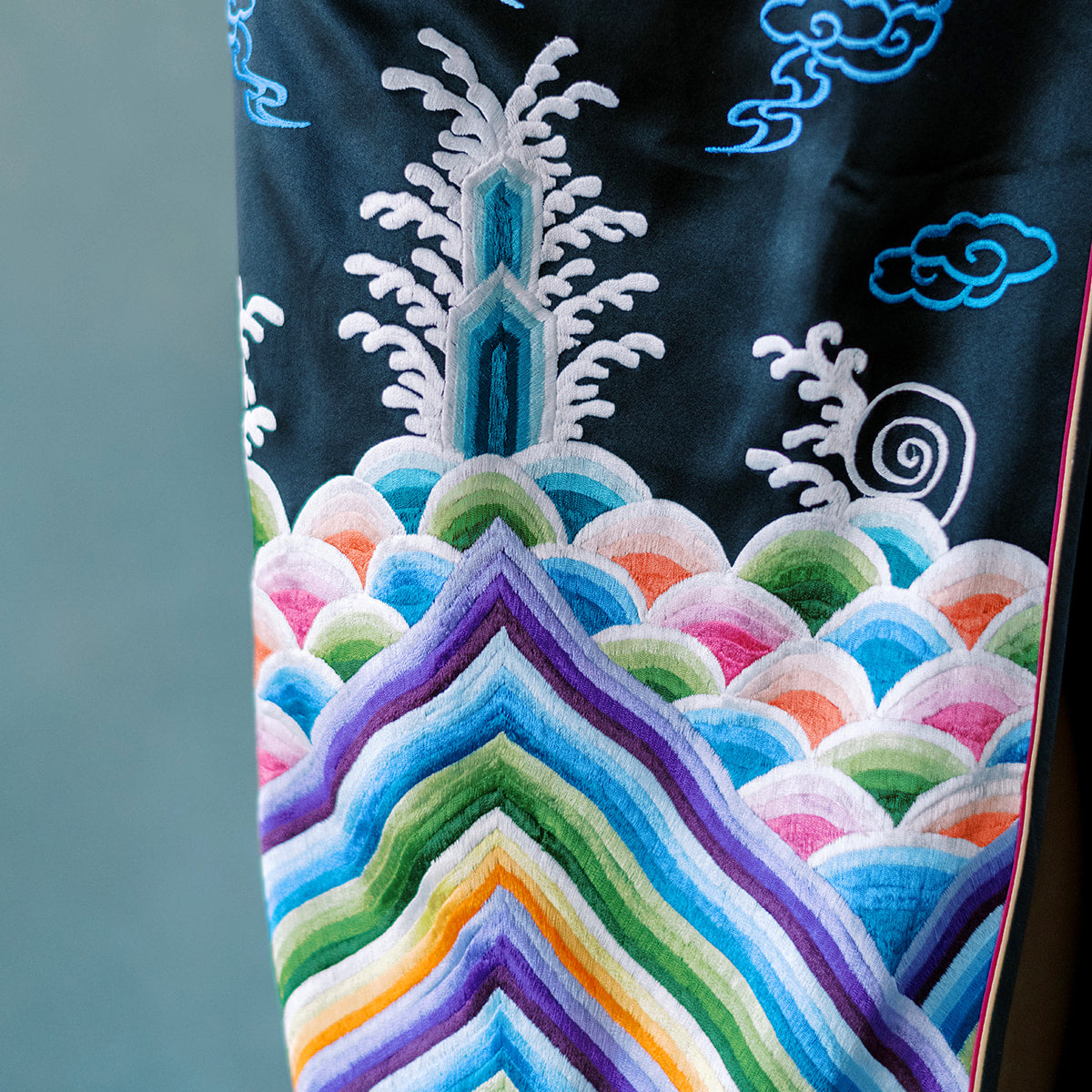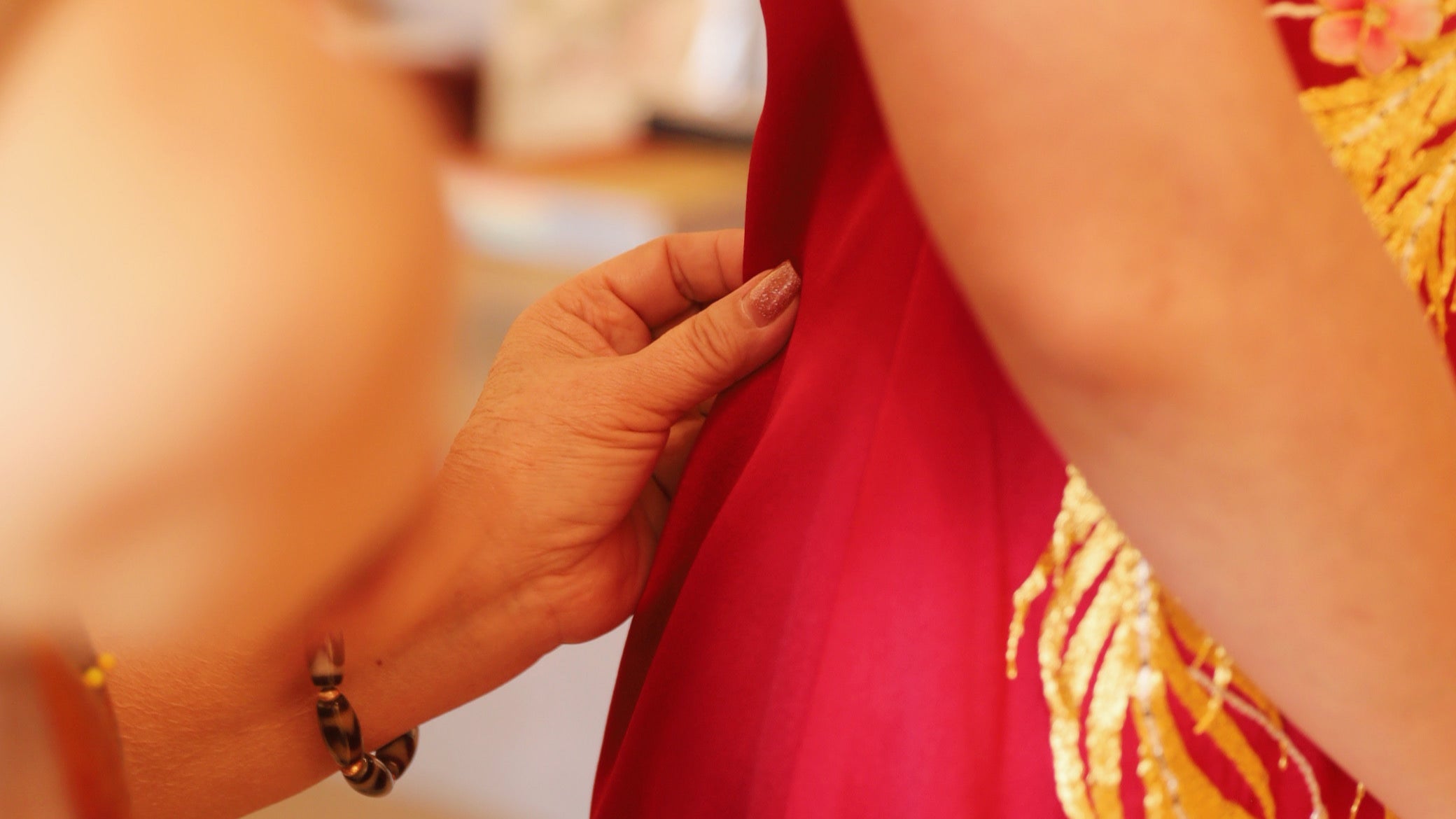
Our Hand Embroidery Techniques
Hand embroidery has been part of Chinese dressmaking for centuries, once reserved for royal robes and ceremonial garments.
Our team uses centuries-old Chinese embroidery techniques to bring dragons, phoenixes, and florals to life in silk and gold.
Technique Spotlight

Shu Embroidery
Originating in Sichuan, Shu embroidery is known for fine silk threads and soft, layered shading.
It captures flowers, birds, and natural scenes with lifelike depth.
In our work, Shu embroidery brings gentleness and light to phoenix wings, peonies, and lotus designs.
Perfect for: Qipaos, Cheongsams, and modern Chinese dresses.
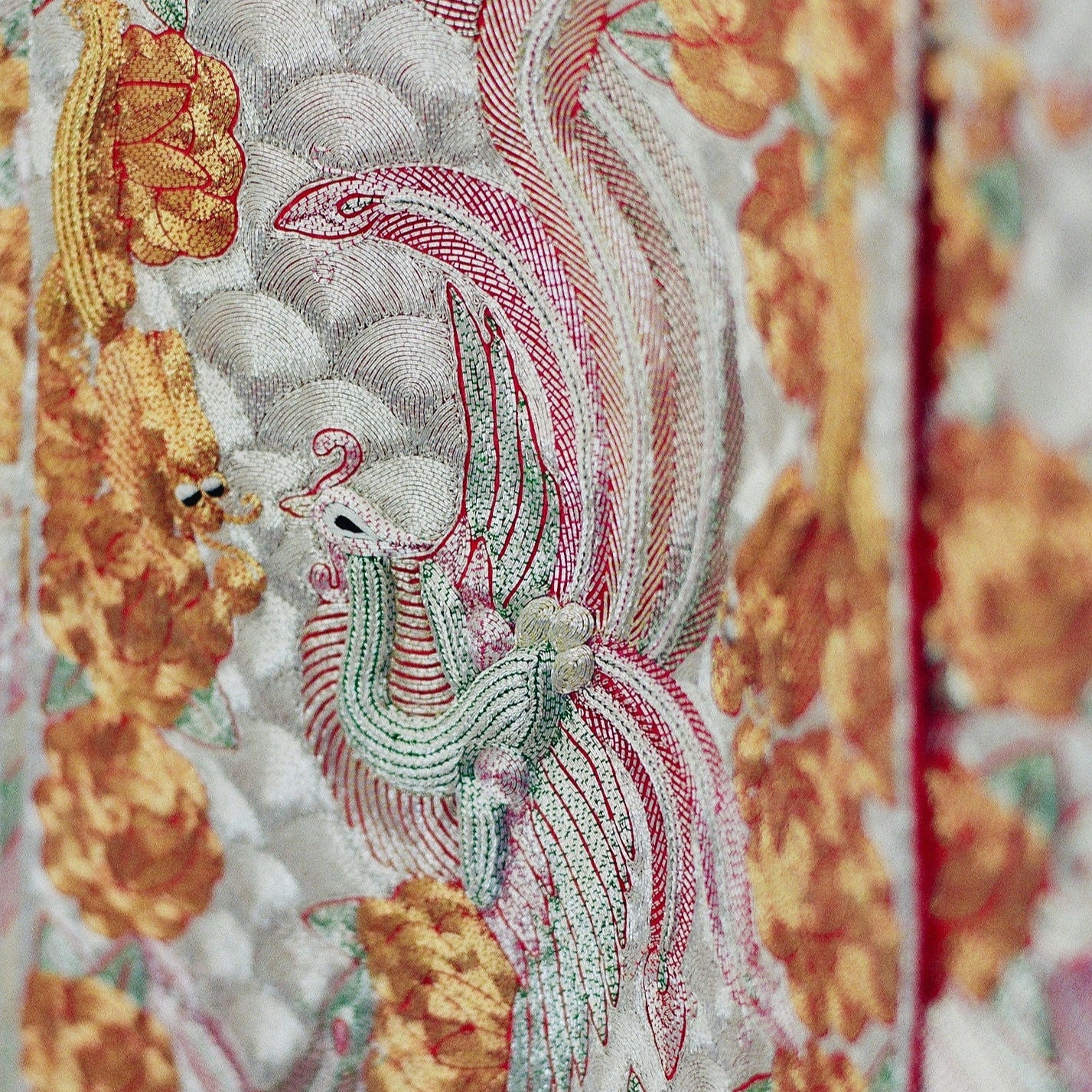
Panjin Embroidery
Panjin embroidery is rich and dramatic. Metallic threads are laid and couched by hand to form dragons, clouds, and geometric borders that symbolize prosperity and strength.
We use gold and silver threads imported from Japan to achieve a raised texture that reflects light beautifully on silk.
Perfect for: Traditional Chinese wedding dresses and Tang suits.
Symbols and Meaning
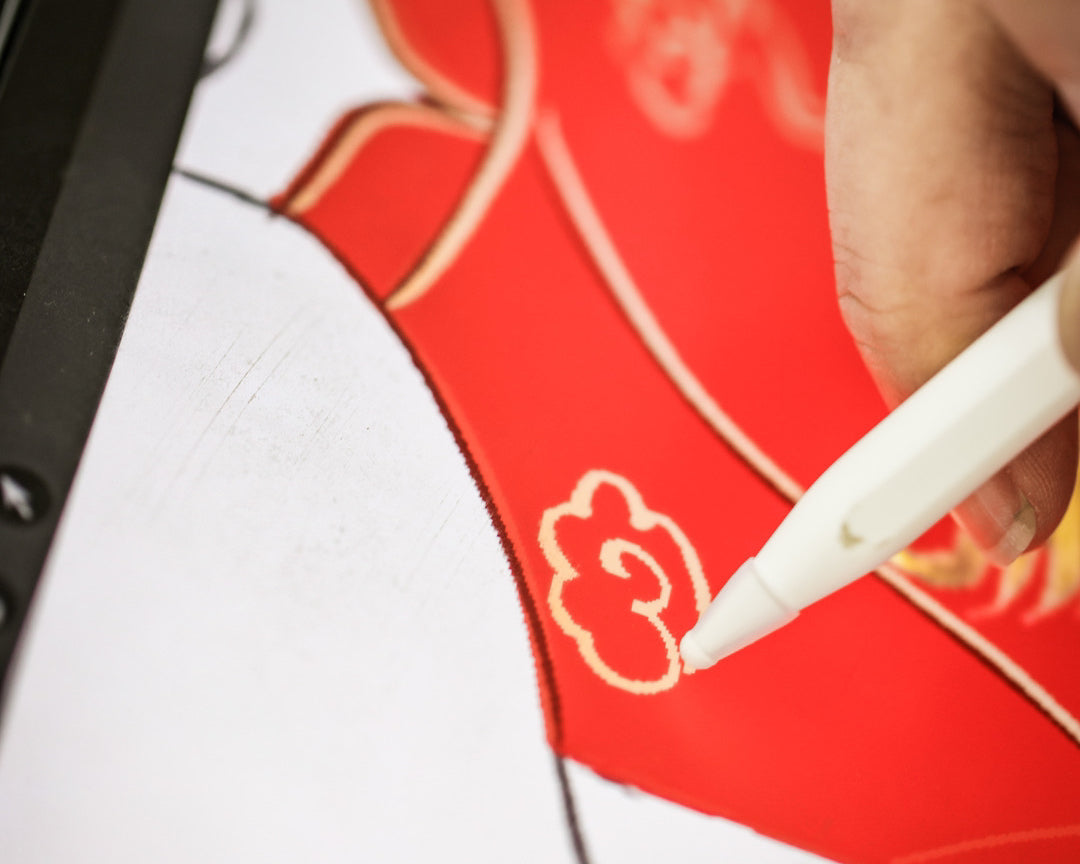
Process and Team
The design begins as a hand-drawn sketch on paper before being traced onto silk.
Threads are dyed, twisted, and layered to build tone and depth.
Our embroidery team works for months on a single wedding dress or Qipao, ensuring every stitch aligns with the original drawing.
The embroidery department is led by Thy, who learned her craft in Vietnam and now guides a small team of needleworkers at JINZA.
